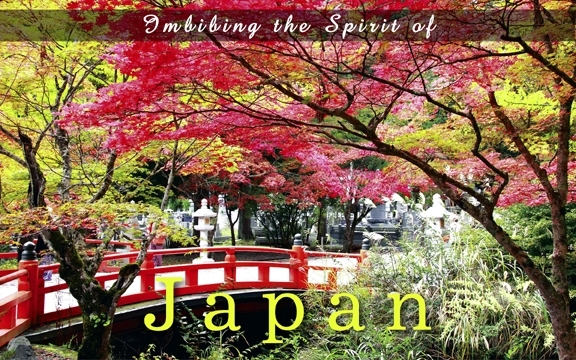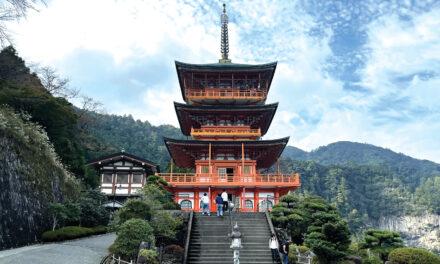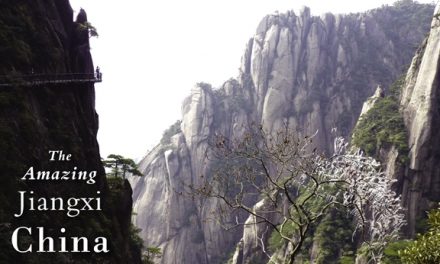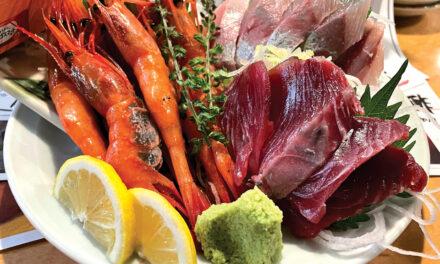Japan
Imbibing the Spirit of Japan
Article & Photography by Steve Gillick

In Japanese mythology, the word ‘Hannya’ refers to a female serpent-demon filled with hatred and jealousy. Hannya masks are featured in many traditional Noh Theatre plays where they take on the appearance of devils, with two sharp horns, leering eyes and a gaping mouth filled with fangs. Interestingly enough, ‘Hannya’ means wisdom. Yet in Koyasan, we learned a whole new intoxicating meaning of the term.
After a full day exploring Koyasan, we retreated to the Jimyoin, a peaceful, quiet temple lodging near the centre of the town. At dinner time, one of the Temple monks brought an amazing vegetarian feast to our room and asked what we wanted to drink. Taking advantage of his personable nature, and knowing that alcohol was not permitted, we joked about ordering sake. He looked at us seriously and said that sake was not allowed, but then breaking into a smile he suggested that we could order ‘Hannya-to’. In response to our quizzical looks, he explained that ‘Hannya –to’ was in fact, sake!
The word ‘Hannya-to’ literally means ‘hot wisdom’ and relates to the founding of the Shingon school in Koyasan by Kobo Daishi in 815. (2015 is the 1200th anniversary). Daishi allowed the monks to drink one cup of hot sake mixed with salt each day, in order to help them tolerate the harsh life in the mountains, especially during the winter season. The drink was said to warm the body and engender wisdom with the belief that sake itself was the very source of wisdom. So while alcoholic drinks per se were not allowed, ‘Hannya –to’ was!
And to help us appreciate our temple surroundings, reflect on the tranquility of the private Zen garden outside our room, savour the amazing vegetarian dishes before us, and drink in the spirituality of our surroundings in Koyasan, we drank Hannya-to. And it worked!
Koyasan has long stood as a legendary “must see” for back packers and as well as over one million pilgrims each year. In 2004, UNESCO listed Koyasan as a World Heritage Site; part of the ‘Sacred Sites and Pilgrimage Routes in the Kii Mountain Range’. At the present time there are 123 temples that offer encounters with serenity, reflection, meditation and peace of mind.
Most travellers depart for Koyasan on the 90-minute train ride from Osaka. They arrive at the Hashimoto station where they board an incline cable car for the 3000 foot ascent, past 10 station stops, to Koyasan. From there a local bus takes visitors on a 10-minute drive into town.
We chose the Jimyoin after researching many of the 52 temple lodgings and we were more than pleased with our decision. On arrival we were greeted by one of the monks who instructed us to place our shoes in a cupboard, don slippers and follow him down the long, twisting corridor to our room. On the way we were told when we could use the ‘bath’ room (similar to a hot bath/hot tub); informed that dinner would be served in our room at 6:00 pm, and invited to participate in morning prayers at 6:00 am. Our room was beyond expectation. It was a large, traditional washitsu –a Japanese room with tatami mats on the floor—filled with antiques, drawings and kakejiku (hanging scrolls of painted scenery). A small alcove overlooked our very own Zen garden. We decided to put our awe on hold for the time being and explore the town.
Across the street from the Jimyoin was a Burmese Temple, where calm statues of the Buddha sat next to horrific depictions of life in the underworld. It was a graphic reminder that throughout the centuries, the role of the priest was to instruct worshippers, many of whom were illiterate, on how to live a righteous life, and remind them in words and illustrations of the consequences of not respecting the teachings of the Buddha.
Other temples along the two main streets and connecting side streets were also characterized by moralistic architecture and design. Tucked under temple roofs were carvings of Baku (mythological beasts with the trunk and tusks of an elephant, the eyes of a rhinoceros, the paws of a tiger and the tail of an ox), Shishi (fierce, growling dog-lions) and angry looking Dragons, all of which served to dissuade evil spirits from entering the holy realm of the temple while at the same time serving to bring good fortune to those who came to pray.
And standing outside many temple gates were the Nio guardian statues: Tall, scary, scowling gods, one with mouth open (Angyo) symbolizing birth and the beginning of all things, and the other, with mouth closed (Ungyo) signifying death and the end of all things. Their chilling expressions ward off evil and protect all who enter the temple grounds.
The cemetery in Koyasan lies to the northeast and is accessible by foot or bus. It’s a fascinating and mysterious world of simple tombstones, elaborate corporate memorials (including a rocket ship) and hundreds of peaceful looking Jizo (the Boddhisattva seen as the protector of travellers, women and children) dressed in traditional red hats and capes. The main pathway leads to The Great Forest of Japanese Cedar, a collection of towering trees, some 600 years old and 165 feet high, that stand guard over the moss-covered Japanese lanterns, torii gates and headstones below. And just beyond lies the Ichinohashi Bridge that pilgrims cross to reach the Okunoin, the solemn, sacred memorial to Koyasan’s founder, Kobo Daishi.
Several hundred photos and innumerable introspections later, we departed for Kongobuji, the main temple complex and the site of Kobo Daishi’s original retreat. The rock garden (Banryutei) is one of the largest in Japan and represents, through raked sand and strategic rock placements, a male and female dragon emerging from a sea of clouds to protect Kobo Daishi on his ascent to ‘eternal meditation’.
Other major attractions in Koyasan include the elaborately ornate mausoleums commemorating the great Shogun Ieyasu Tokugawa (the founder of the dynasty that lasted from 1608 to 1863) and his son, Hidetada. And nearby, the Reihokan Museum contains priceless religious statues and treasures, many of which are designated as national cultural assets.
Entranced by the whole experience, we returned to the Jimyoin for a soothing hot bath and then an incredibly delectable vegetarian meal. Dishes included grilled tofu with miso, bamboo shoots and shitake mushroom with dry tofu, grilled fresh mountain vegetables, delicately battered vegetable tempura, velvety smooth sesame tofu (one of the specialties of Koyasan), along with tasty miso soup and fresh steamed rice. And of course our Hannya-to only heightened the culinary experience.
At 6:00 am the next morning, we joined other pilgrims for the 30-minute prayer service and then after a simple but delicious breakfast we enjoyed one last wander around town. Then it was back to the cable car and the descent to the hustle-bustle of big city noise and traffic.
Koyasan is a breath of fresh air, a shot of tranquility, a peaceful sojourn into respect, patience, beauty, relaxation and soul searching. It ranks high as a destination where ‘chilling’ is the order of the day.
www.ilovejapan.ca
Click on cover to view published article


















